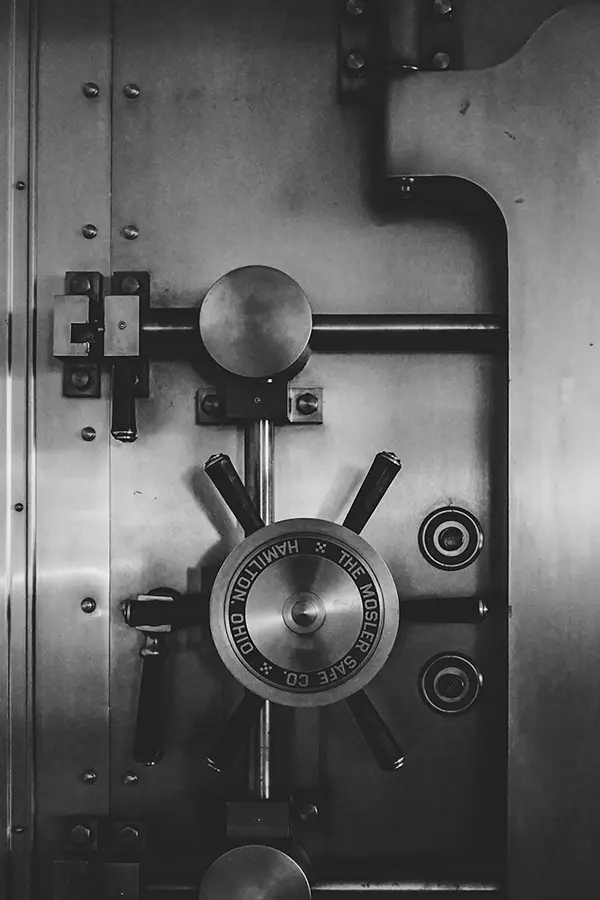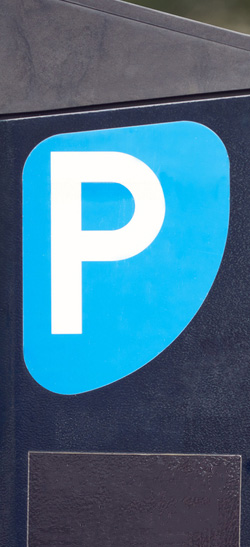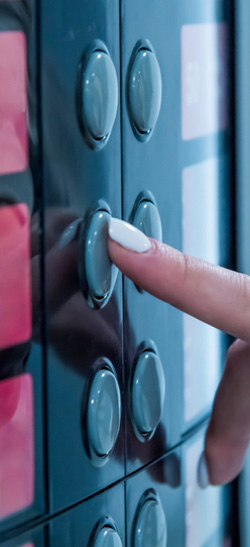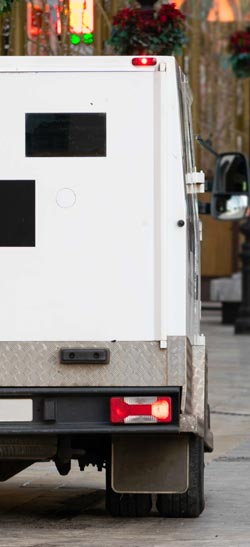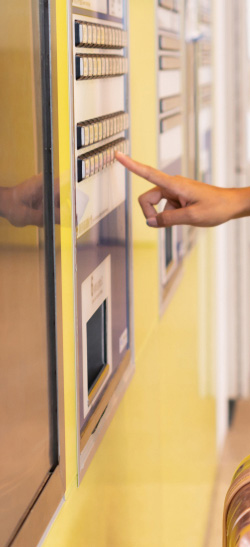There are many different types of safes and vaults. And all of them have the same essential purpose: to store and protect valuable items.
However, there are important differences between each storage device worth considering. These influence the suitability of each solution for different organisations and scenarios.
Let’s analyse both the apparent and subtle differences between vaults and safes.
What are vaults?
Vaults are large storage structures or rooms that are typically built into or underneath buildings.
They usually have reinforced steel doors with sophisticated lock systems. They also often require extra security measures such as cameras, alarms or even guards.
In most cases, vaults are for commercial use by banks and businesses that deal with high volumes of cash or other valuables (such as jewellers or pharmacies). However, there are more specific kinds of vaults, too. These include art vaults, seed vaults, and others. Each of these will have specific features and technology aimed at preserving what it stores.
What are safes?
Safes are secure cabinets used for storing and protecting valuable items. They are used by organisations and individuals.
They are typically made of reinforced steel and come in many different sizes and types. For example, there are:
- Fire-resistant safes (resistant to heat and flames)
- Wall safes (installed in walls for added security and – sometimes – concealment)
- Ground safes (similar to wall safes)
- Data safes (also known as media safes, used for storing valuable data devices such as USBs, hard drives, etc.)
- Smart safes (safes that monitor their contents, especially useful for cash management)
And more.
The differences between vaults and safes
1. Size
While both vaults and safes come in varying sizes, vaults are typically significantly larger than safes.
The size of vaults means that they are immobile. Safes, meanwhile, are usually portable (or can at least be re-installed in other locations).
This difference can be an advantage for vaults in some cases and a disadvantage for safes, and vice versa.
For example, thieves can’t steal vaults themselves, but they can steal safes. And when businesses move locations, they need to build a new vault, but they can simply bring their safes with them.
2. Security level
Vaults typically have a higher level of security than safes.
This is because vaults, due to their higher number of valuables, are typically equipped with extra security measures. These measures include the security of the building they are located in, as well as alarms, surveillance cameras, etc.
By virtue of their size, safes are less secure than vaults. If thieves are able to take safes, they will have more time to try and ‘crack’ (open) them.
3. Purpose
Both safes and vaults have the overarching goal of storing and protecting valuables. Beyond this, both have overlapping but slightly different purposes.
For example, a safe might be used to store an artwork and a vault to store many artworks. A safe could also be used to store cash, and a bank vault a lot of cash.
The key difference in each scenario is scale. Safes do what vaults do on a smaller scale.
This has implications for complexity, too. Vaults’ larger sizes typically require higher security and more maintenance.
So, storing an artwork in a safe is relatively straightforward. But storing several or even tens of artworks will likely require a classification and monitoring system. The same goes for cash.
The more of something there is, the more it will likely be targeted and the harder it will need to be monitored.
4. Access
Safes can usually have access restricted to just one or a few people because their contents are few. Vaults, on the other hand, have more contents which often means more frequent access is required to them.
This, in turn, means that more individuals need to be granted access, which makes different access systems more practical.
For example, keys or combination codes are useful for safes. But an electronic key card is more suited to a vault because it can track access information, is harder to pass onto strangers, etc.
Locking mechanisms
Locking mechanisms are important for all kinds of vaults and safes. They need to be both secure and practical.
For example, combination locks are ideal for personal safes. Owners simply need to be able to recall a memorable code to unlock a combination lock.
However, for vaults, which are frequently accessed by many individuals, a code would need to be changed regularly (and therefore harder to remember).
Vaults require more complex but seamless to use solutions, such as electronic access card readers or biometric systems.
5. Price
Safes cost less to purchase and maintain than vaults. The price difference is significant enough for some organizations to choose multiple safes over a single vault.
However, when the cost of risk (and insurance) is considered, vaults can ultimately be a less expensive option for businesses that use them.
Conclusion
Vaults and safes are similar but not the same. It is an oversimplification to say that vaults are simply bigger safes, because a lot of complexity comes with scale.
Each has several sub-categories according to what exactly it is used for storing.
Vaults provide the highest levels of security. They are ideal for organizations with high-value or vast quantities of valuables to store. Due to their size, setting up and maintaining them involves higher costs.
On the other hand, safes are portable and cost-effective. They generally provide sufficient security for smaller assets or personal use.
